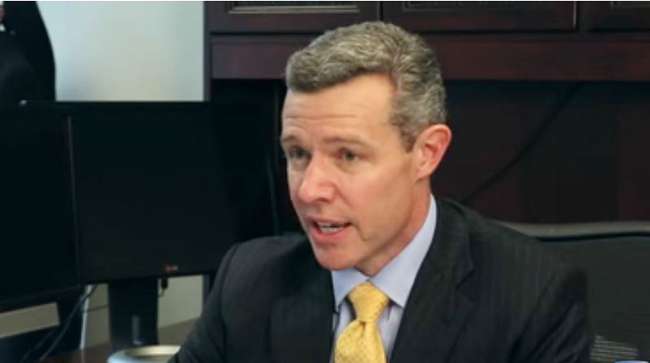Staff Reporter
New AASHTO Director Jim Tymon Outlines Goals for 2019

Advocating for a sustainable solution for the federal Highway Trust Fund will be a top priority for the American Association of State Highway and Transportation Officials’ new leader.
AASHTO Executive Director Jim Tymon hosted a conference call Jan. 8 to discuss his goals for leading the agency in 2019. The Highway Trust Fund, which assists states with maintenance and construction projects, is expected to go bankrupt in 2020. Tymon, who started in this role Jan. 1, pledged to work with Congress to put the trust fund on solid ground.
Tymon, who formerly served as AASHTO’s chief operating officer and director of policy, also listed working with federal and private sector partners to adapt new technologies to transportation needs and cultivating a talented workforce as his other priorities.

He encouraged states to be creative in their recruitment techniques, citing the Colorado Department of Transportation’s partnership with a community college to offer a two-year applied science degree in highway maintenance management.
“We’re doing this because we know state DOTs are evolving into innovation agencies and, as a result, they’re looking to attract a different type of worker than maybe they have traditionally done,” Tymon said.
Tymon’s call occurred on the 18th day of the federal government shutdown, which began Dec. 22. Although the Highway Trust Fund is operating, Tymon said that state government agencies could feel the shutdown’s effects as it wages on.
He explained that, because the government has been buoyed by continuing resolutions since the fall, states haven’t received more than a quarter of the funding that was scheduled for them in the appropriations process.
“I think what you’ll see in the short term is states finding ways to move money around from different pots in order to keep their systems operating as efficiently as possible. It’s not something they can do forever,” Tymon said. “The longer this drags on, you’re going to see states start to draw back on their letting for new projects because they won’t have their money coming in yet.”

We're between seasons on RoadSigns but have created an intersession season as we get set for 2019. In Episode 1, we ask: How Does Congress Say Trucking? Are the planets finally aligning for movement on infrastructure funding? Hear a snippet above from Kellie Mejdrich of CQ Roll Call, and get the full program by going to RoadSigns.TTNews.com.
Tymon expressed a positive outlook on the future of a federal infrastructure package. He noted that, after shutdowns, lawmakers often seek common ground to demonstrate that they can work together.
“Maybe this is an opportunity for infrastructure to step into that role and to serve as a way for the parties to come together and Congress and the administration and push forward with some kind of infrastructure package,” Tymon said. “Federal transportation infrastructure investment has traditionally unified political parties around the common belief that transportation serves all Americans.”
Tymon, who replaces Bud Wright, said he has spent most of his days as executive director greeting new state DOT chiefs as dozens of newly elected governors appoint them. He said he looks forward to working with this new crop of leaders, who hail from various transportation and political backgrounds.
Tymon acknowledged states’ various efforts to generate infrastructure revenue. Many have enacted hikes to their fuel tax rates. Several have experimented with miles-based user fee programs. Connecticut voters on Nov. 6 overwhelmingly supported an amendment to create a lockbox to protect transportation funds.
Although these efforts indicate an awareness of the need for infrastructure funding, Tymon said they are not enough on their own.
“Don’t mistake the success of raising revenue at the state level as an excuse for the federal government to walk away from their responsibility,” Tymon said. “States can’t do this work alone. They need a strong federal partner.”

